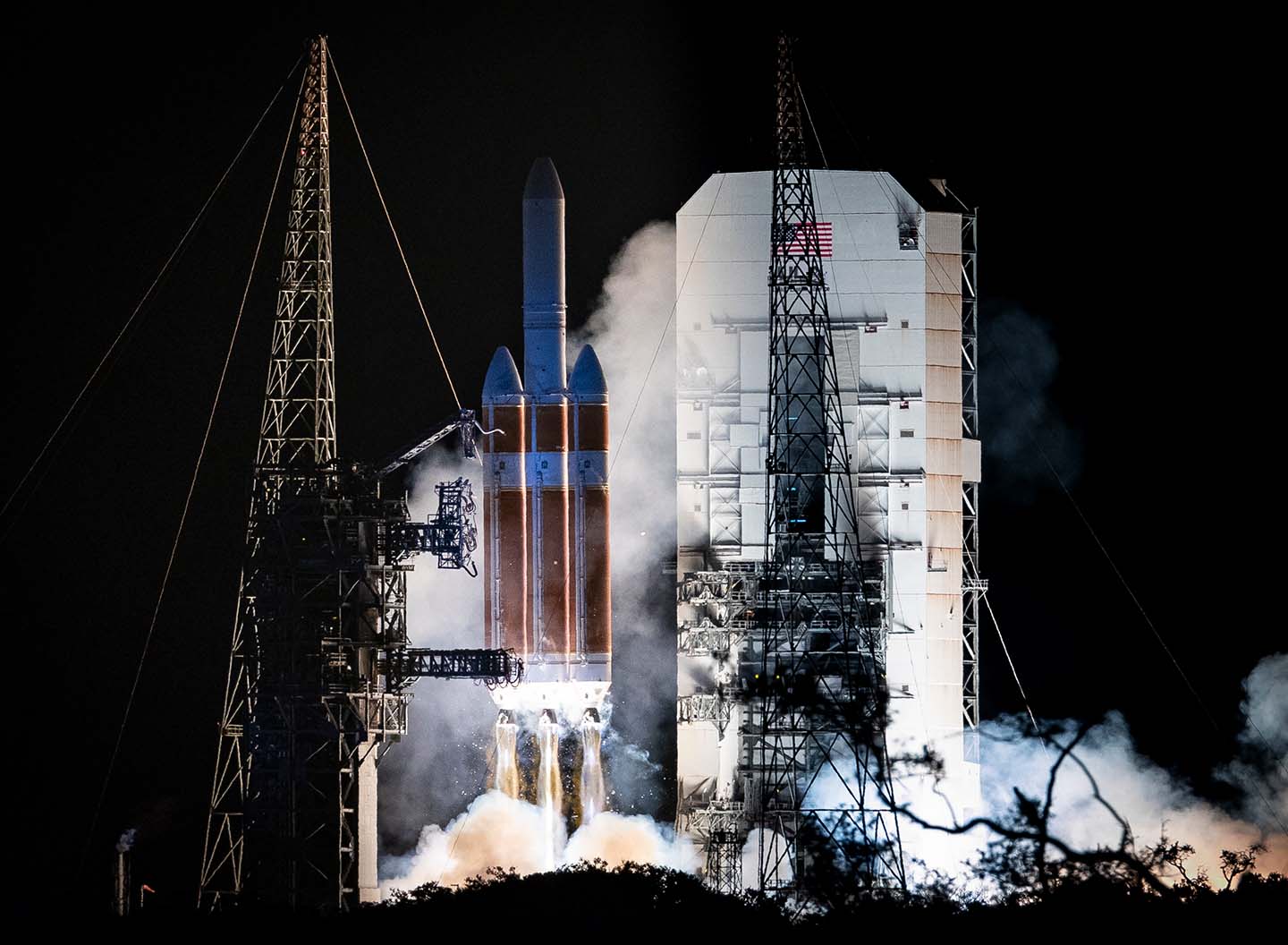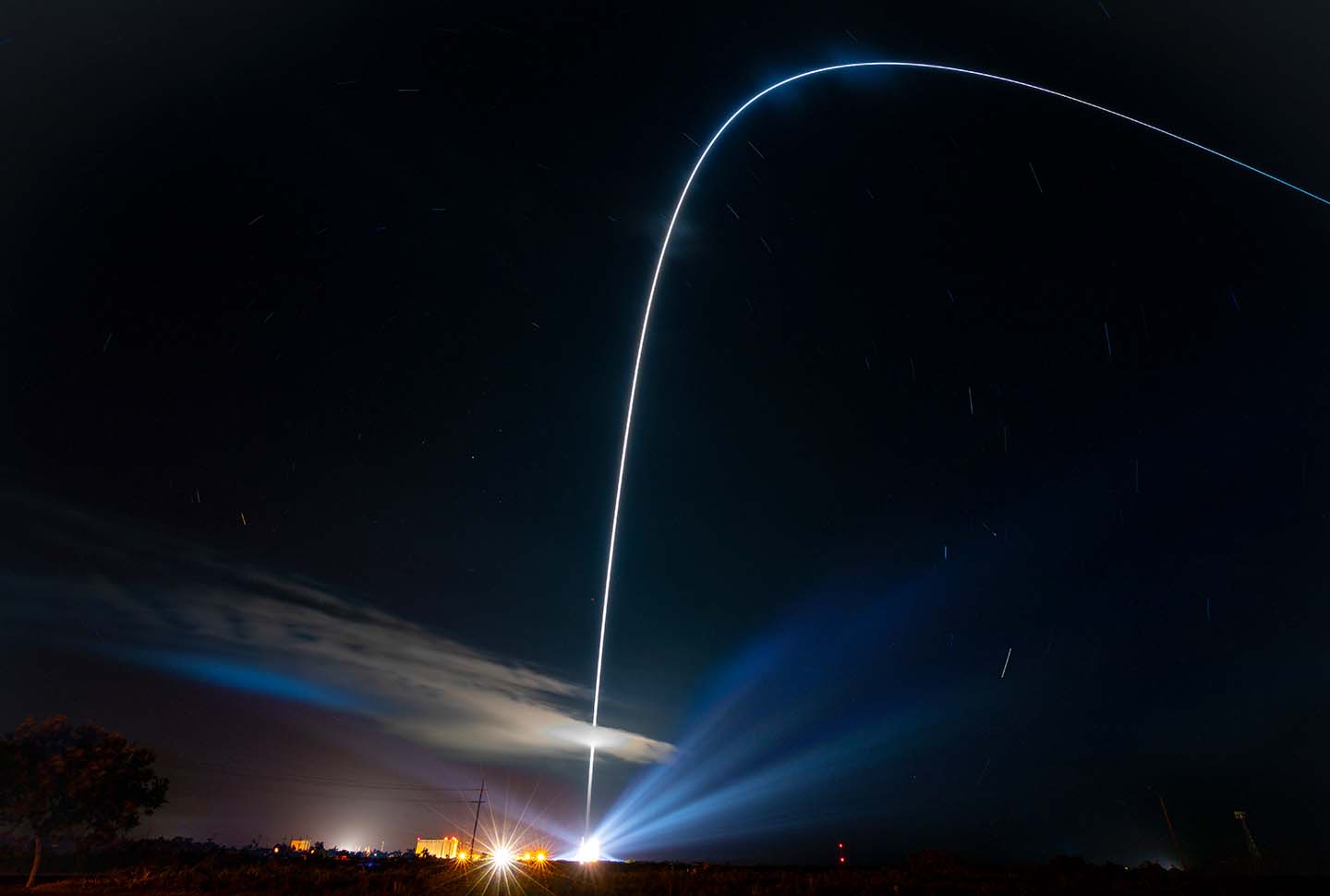Press Release
Parker Solar Probe Launches on Historic Journey to Touch the Sun
Hours before the rise of the very star it will study, NASA’s Parker Solar Probe launched from Florida Sunday, Aug. 12, to begin its journey to the Sun, where it will undertake a landmark mission. The spacecraft will transmit its first science observations in December, beginning a revolution in our understanding of the star that makes life on Earth possible.
The spacecraft — designed, built and managed for NASA by the Johns Hopkins Applied Physics Laboratory — lifted off at 3:31 a.m. EDT on a United Launch Alliance Delta IV Heavy rocket from Space Launch Complex 37 at Cape Canaveral Air Force Station. At 5:33 a.m. EDT, Nicholas Pinkine, the mission operations manager at APL, reported that the spacecraft was healthy and operating nominally.
The mission’s findings will help researchers improve their forecasts of space weather events, which have the potential to damage satellites and harm astronauts on orbit, disrupt radio communications and, at their most severe, overwhelm power grids.
“This mission truly marks humanity’s first visit to a star that will have implications not just here on Earth, but how we better understand our universe,” said Thomas Zurbuchen, associate administrator of NASA’s Science Mission Directorate. “We’ve accomplished something that decades ago, lived solely in the realm of science fiction.”


